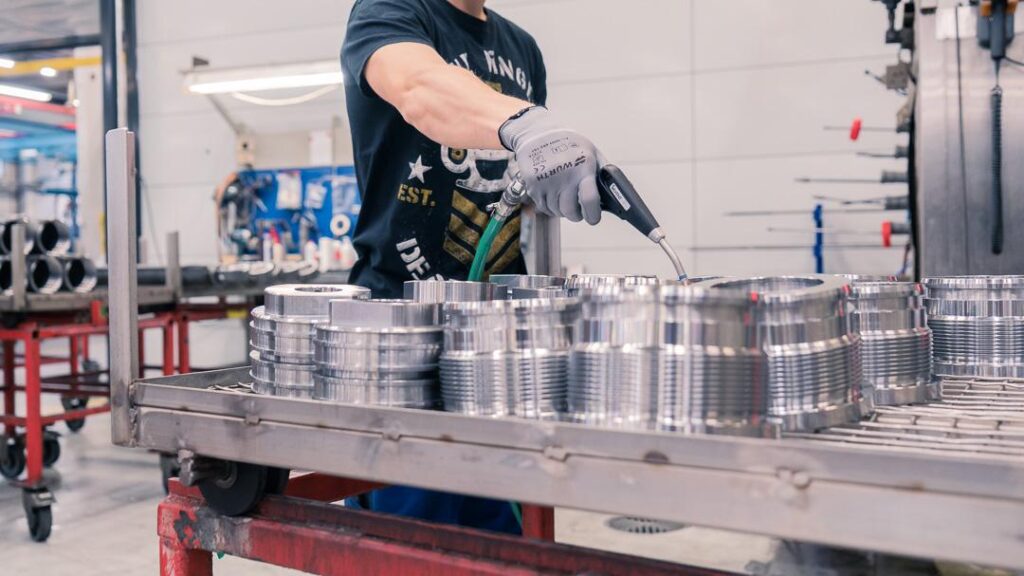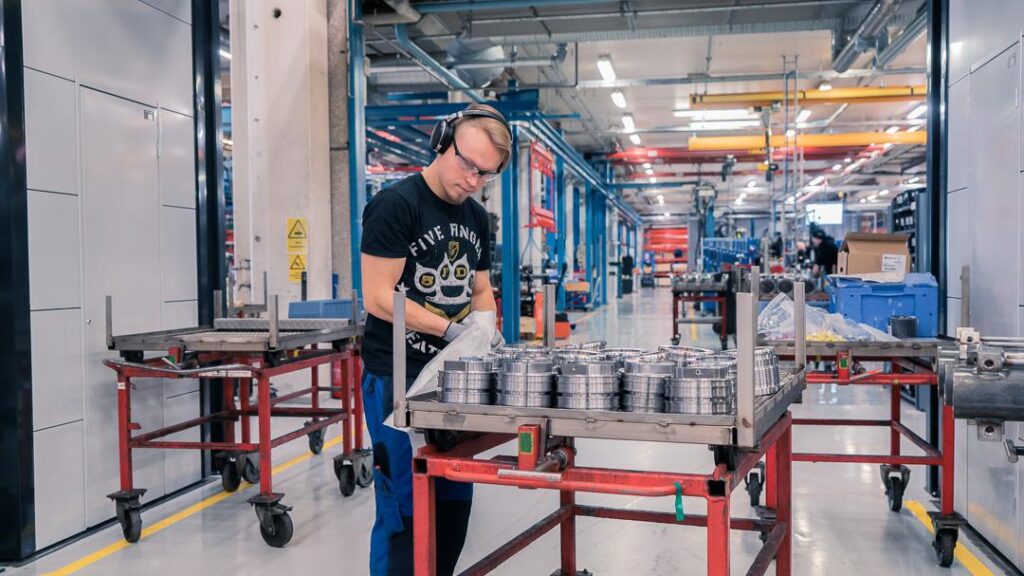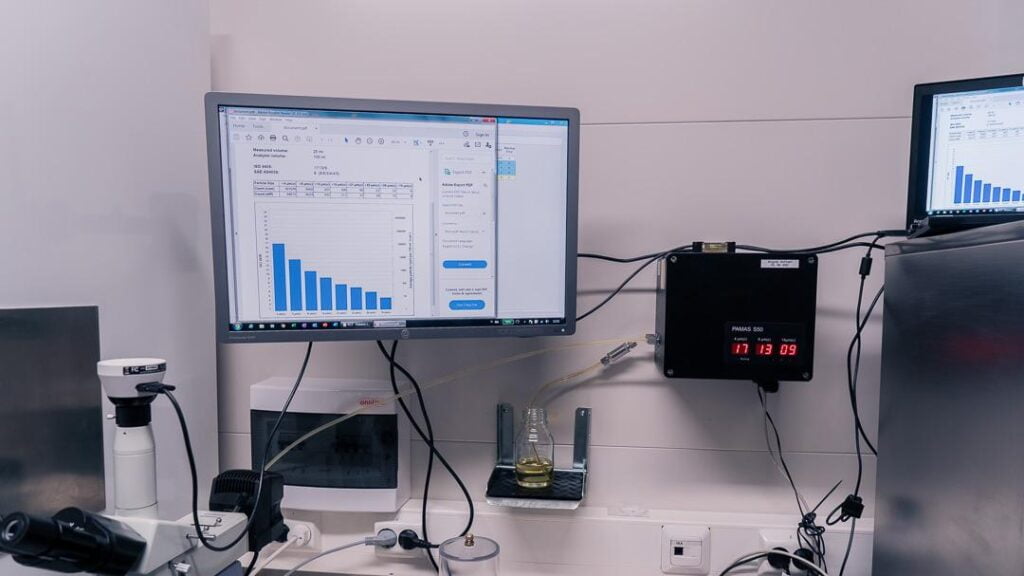Importance of cleanliness in hydraulics
Did you know that maintaining fluid cleanliness in hydraulic systems can cut operational costs by up to two-thirds? Clean systems do not only lead to enhanced uptime, but improve system performance, and reduce machine and equipment operational expenses. Modern equipment rely on a highly efficient, reliable, and robust hydraulic system. Fluid power, as an energy source, delivers greater force in smaller volumes compared to electrically driven systems. Therefore, ensuring optimal cleanliness is crucial for the success of any hydraulic operation. Contamination in hydraulic fluid is a key factor affecting system reliability, with 50 to 70% of hydraulic system failures attributable to it. Therefore, taking proactive and predictive measures to ensure oil cleanliness can significantly mitigate this risk. By implementing processes to maintain fluid and system cleanliness, maintenance professionals can extend the life of system components and reduce unplanned downtime and maintenance costs.
To simplify it – the cleaner the oil, the longer the equipment will operate reliably. The operators that keep their hydraulic processes clean have an immediate advantage compared to those that do not. Ensuring proper hydraulic cleanliness enables you to realize the full lifecycle, which means you get the best value out of your investment. Let’s have a closer look at what cleanliness in hydraulic systems means.
🔎 Objectives in hydraulic cleanliness
An overall approach to system cleanliness prevents downtime and related costs in hydraulic system cleanliness. When a hydraulic system faces unexpected downtime due to essential components malfunction from contaminated fluid, profits decrease while production costs increase. Additional unwanted financial charges can feel exponential as components must be repaired or replaced.
When counting all the factors such as maintenance hours, replacement parts, fluid consumed, and decrease in profitability, it’s easy to understand the substantial cost impact of fluid that isn’t following the ISO standards. Fluid contamination issues provide an excellent opportunity to increase, save maintenance costs, and lower operational costs.
The main objective in hydraulic cleanliness is to apply a comprehensive systems cleanliness process. With the cleanliness process, the hydraulic system’s life span will increase by extending the components and the fluid service life. Other benefits include a reduction in maintenance costs and fluids disposal and maximize uptime. For example, upgrading from cellulose to fiberglass filter elements, installing desiccant breathers, and installing off-line filtration can be quite useful in improving hydraulic fluid cleanliness.

🔹
🎯 Targets for the hydraulic system cleanliness
Implementing a total system cleanliness approach to hydraulic systems is vital. Ultimately, you can create reliable operations and save money by controlling contamination and taking care of fluids. Staying focused and avoiding fluid contamination can save you from additional charges associated with fluid contamination.
Here is a list of a few steps to tackle when creating a cleanliness system:
• Establish a premise and target for the cleanliness process and each system.
• Evaluate all the hydraulic and lubrication systems.
• Establish a fluid analysis program and set up specific fluid cleanliness levels for all the fluids.
• Filter all new fluids when received and also during the transfer.
• Seal all reservoirs and tanks to ensure cleanliness.
• Enhance the filtration systems by installing high-quality desiccant breathers, enhance air, and liquid filtration on existing systems.
• Improve the storage and transfer of bulk fluids.
• Ensure to keep out water and moisture from hydraulic systems.
• Use approved techniques to remove unwanted moisture or water.
• Commit and engage the whole team to fluid cleanliness.

🔹
🧫 Most common contamination sources in hydraulic systems
In an ideal situation, hydraulic fluid should create a lubricating film to keep precision parts separated. This film should be thick enough to fill the gap between moving parts. The actual thickness depends on fluid viscosity, applied load, and the relative speed the two surfaces face.
When the contamination particle is larger than the gap between the surfaces, it creates disruption. The friction increases and the damage is evident. This damage introduces more contaminant particles. It is vital to keep the contaminant particles smaller than the clearance and reduce the size as much as possible.
Hydraulic fluid contamination is a severe issue and can cause considerable damage to hydraulic systems. To effectively deal with contamination, it is crucial to know the potential sources. Here are the most common ones:
1. Hydraulic fluid contamination during production
How do the hydraulic fluid production processes create contamination? The factories that produce hydraulic fluids may accidentally cause contamination during processing. In most cases, factories rarely control hydraulic fluid storage, which makes another source of contamination. Therefore, emphasizing filtering all fluids that move into a system is vital— even a fresh batch of hydraulic fluid could be already contaminated.
2. Hydraulic fluid contamination during storage
Storage is not necessarily the safest place for hydraulic fluids. Surprisingly, moisture can access sealed and waterproof plastic containers through a chemical process called breathing. Breathing can occur if a container is exposed to variations in temperatures, such as storing outside where the container is exposed to sunlight. Even though it is impossible to see moisture contamination, it can still damage the hydraulic system and the system’s operational performance.
If containers aren’t sealed tightly or are left open, it can cause another significant opportunity for contamination — such as dust and moisture — to enter. Storage-related contamination can be prevented by storing fluids at a controlled temperature, sealing the containers carefully, and laying them on their sides.
3. Contamination during fluid transfer
Fluids exposed to air during transfer and handling hold the risk of absorbing moisture and becoming exposed to dust and other air particles. If the working environment and equipment are not clean, contamination is very likely to happen. Also, not washing the system comprehensively before adding new fluid can worsen the contamination, as mixing fluids can create a chemical reaction and cause contamination.
Follow these steps to minimize this type of contamination into a hydraulic system:
- Don’t open the fluid in an unclean area.
- Always remember to properly wash the system before adding new fluid.
- Close the fluid container lid as soon as possible to avoid contamination.
- Filter the hydraulic fluids always before adding them into the hydraulic system.
4. Contamination during system manufacturing process
It may sound surprising, but a hydraulic system may be exposed to contamination during the manufacturing process. For example, there may be tiny Teflon particles left from sealing tape on a hydraulic port, or there might be grease or other lubricants that weren’t wholly removed while assembling the pump; just to mention two examples. Nevertheless, ignoring the importance of ensuring cleanliness in any step of the process can create contamination in the hydraulic system. Built-in contamination can be avoided with an appropriate use of filters, changing the filters regularly and careful handling of the filters when they are installed.
5. Contamination during system maintenance
Last but not least, one possible source of hydraulic fluid contamination is maintenance. During maintenance, there are several ways that contamination can happen; therefore, it is best to mention a few things about how to prevent it:
- First of all, the exterior of the components should always be cleaned off. When doing this, only clean, lint-free fabrics should be used.
- As soon as opened, hoses need to be capped, and ports be plugged immediately. All the hoses and fittings have to be handled very carefully.
- Seals and filters should not be removed from their packaging before installation. A proactive approach to prevent contamination during maintenance is vital.
Even a sealed system can have contaminated build-up. Therefore, controlling contamination in hydraulic systems with any means is always necessary.

🔹
🧪 Different types of hydraulic system contaminants
In general, hydraulic system contamination can be classified into particle contaminants and chemical contaminants. The damages that contamination may cause are, for example, the formation of rust or other oxidation, accelerated component wear, orifice blockage, depletion of additives, the appearance of different chemicals, and oil degradation.
Chemical contaminants
Water – Moisture is the most common chemical contaminant in hydraulic systems. Moisture can cause wide-ranging effects on system components due to its impact on hydraulic oil’s physical and chemical properties, as oil becomes cloudy when the water contaminates it above its saturation level.
Rust – Corrosion in tanks, reduced lubrication characteristics resulting in accelerated metal surface wear are some of the most apparent physical results of excessive water. However, the effects could be as diverse as the jamming of components due to ice crystals at low temperatures. Chemical effects include additive depletion or deposition, oxidation, and unwanted reactions, resulting in acid formation, alcohols, or sludges.
Air – Air can exist in either a dissolved or entrained state in hydraulic systems. When a hydraulic fluid contains undissolved air, problems can occur as it passes through system components. The control of the system is lost by the compressibility of air. Air bubbles forming in the oil reservoir can cause significant damage to pump or cause the oil to boil out of the tank. However, dissolved air may not pose a problem, providing it stays in the solution.
Heat – Excessive heat can cause additive depletion or chemical changes to the fluid in hydraulic systems.
Particle contaminants
Generally, particle sizes are measured in micrometers or microns. To mention a few examples of bigger microns, we could mention a grain of salt, that is about 100 microns and a human hair that is about 70 microns. Some smaller samples of a micron are bacteria, only 2 microns, and not visible to the human eye. The most damage-causing particles in hydraulic or lubrication systems are smaller than 14 micrometers and are not visible to the human eye.
These are the most common particle types found in the fluid of a hydraulic system:
- Metal particles from sawing, machining, welding, grinding.
- Wooden particles from packing materials
- Sand castings and sandblasting
- Resin from cutting fluids and adhesives
- Rubber particles from hoses and rings
- Plastic particles from tools and packaging supplies
- Fibers from fabrics, paper, cardboard
- Paint particles from coatings
- Rust from corrosion of materials and components
🔹
🩸Fluid power as a life-blood of hydraulics
Hydraulic fluid is without a doubt the life-blood of hydraulic systems. Ensuring hydraulic cleanliness and contaminant-free fluids is essential to preventing damage and increasing the hydraulic systems’ life span. Newly developed filter materials for more powerful filter elements reduce operating costs by ensuring a longer service life.
Therefore, for future filter exchanges, users should first compare the technical specifications of filter elements by different suppliers. Independent of the filter housing manufacturer, the operating costs can be significantly reduced using the new generation of filter media.
In the 21st century, the hydraulics industry is on its way to introducing new hydraulic applications combined with modern technologies that enable the production of more effective solutions in the upcoming years. Improved technology will help solve the current challenges at the industry by offering inexpensive solutions to the current problems. We can also expect that fluid power will be used in many advanced ways, and it will be affordable and easier to maintain. As technology improves, the reliability of hydraulic systems will also improve.
Want to know more about hydraulic cleanliness? Check out these post for more interesting content!
Hydraulic oil cleanliness
17.03.2021
The environmental impact has become a concern for most companies since the rapid technological advancement also creates unwanted side effects like pollution and other environmental..
Read more7 steps to hydraulic cleanliness
14.04.2021
Manufacturing hydraulic cylinders requires specific processes to prevent a cylinder from contributing failure to other system components. It is a common scenario that microscopic solid..
Read moreGravimetric analysis in hydraulic cylinder manufacturing
01.06.2020
Gravimetric analysis in hydraulic cylinder manufacturing process? In our previous blog post, we told you about the hydraulic cylinder assembly and as we mentioned in..
Read more

